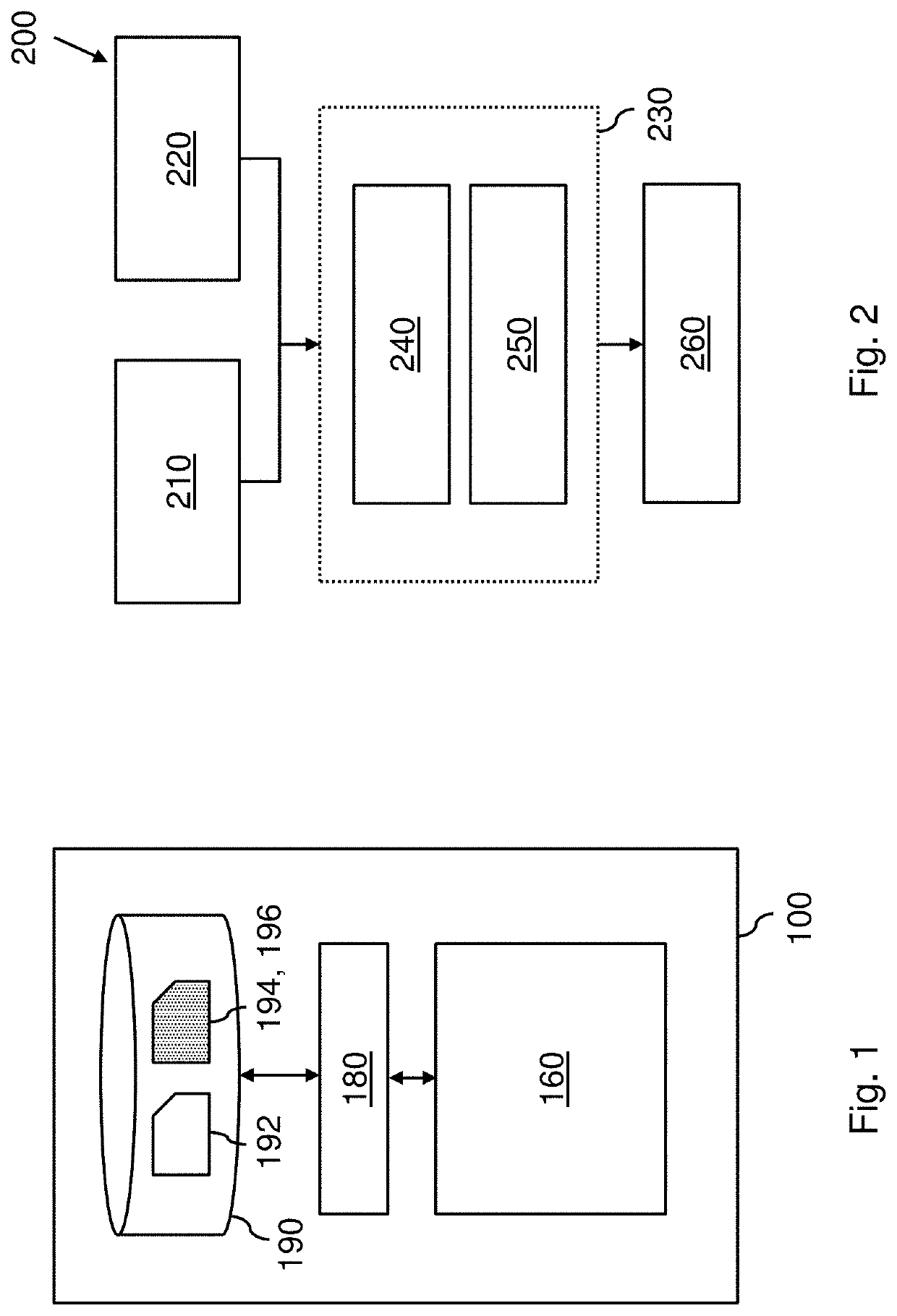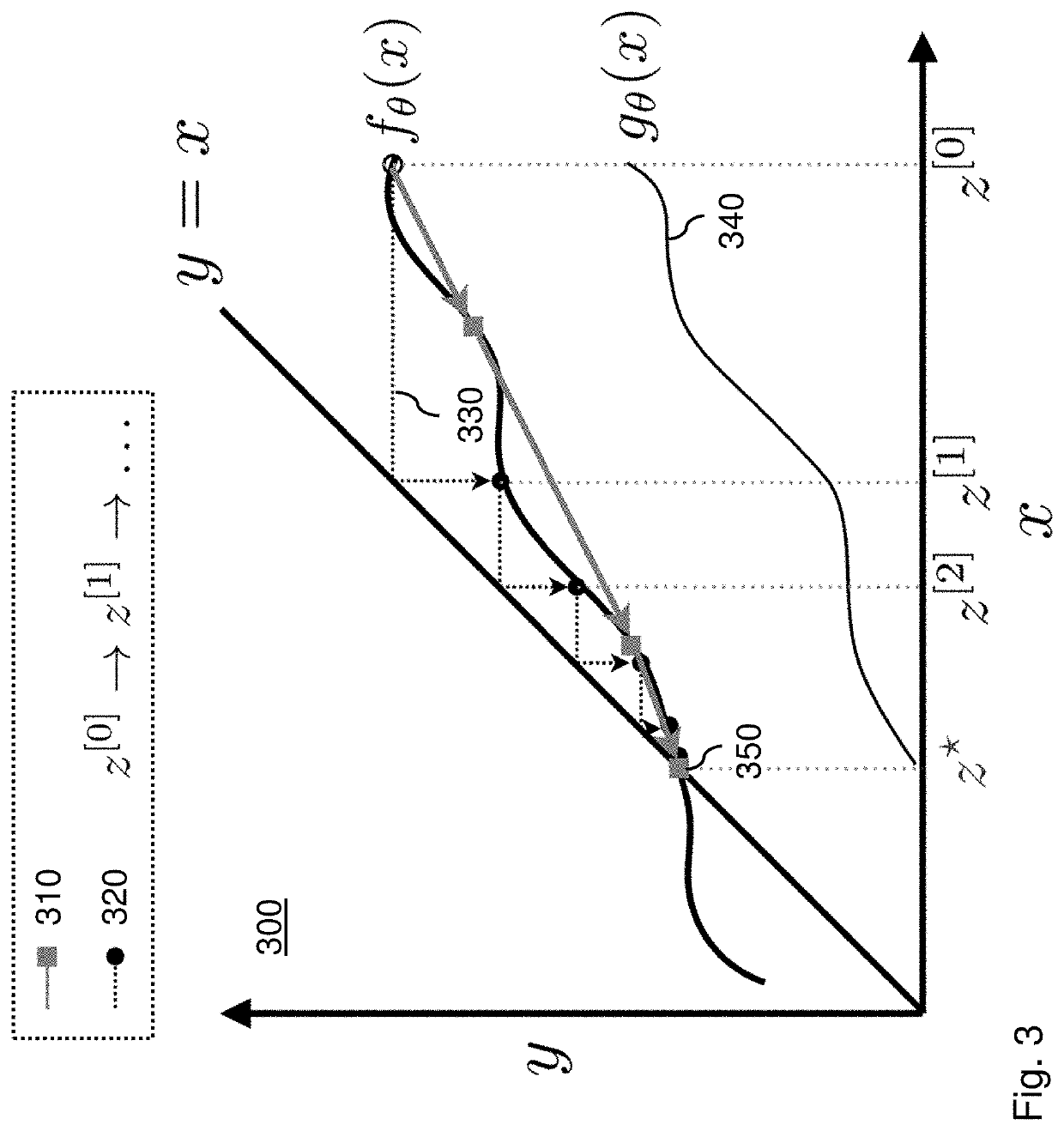Deep neural network with equilibrium solver
a neural network and equilibrium solver technology, applied in the field of neural network system and computerimplemented method training, can solve the problems of large amount of memory, large amount of deep neural network, and expected further increase in memory requirements, so as to reduce the latency of the model, improve the accuracy, and accelerate the computation
- Summary
- Abstract
- Description
- Claims
- Application Information
AI Technical Summary
Benefits of technology
Problems solved by technology
Method used
Image
Examples
Embodiment Construction
[0108]The following describes with reference to FIGS. 1 and 2 the training of a neural network which uses a substitute for a stack of layers of the neural network having mutually shared weights, then describes with reference to FIGS. 3-6 the neural network and its training in more detail, and with reference to FIGS. 7-9 the use of the trained neural network for the control or monitoring of a physical system, such as an (semi-)autonomous vehicle.
[0109]FIG. 1 shows a system 100 for training a neural network. The system 100 may comprise an input interface for accessing training data 192 for the neural network. For example, as illustrated in FIG. 1, the input interface may be constituted by a data storage interface 180 which may access the training data 192 from a data storage 190. For example, the data storage interface 180 may be a memory interface or a persistent storage interface, e.g., a hard disk or an SSD interface, but also a personal, local or wide area network interface such a...
PUM
 Login to View More
Login to View More Abstract
Description
Claims
Application Information
 Login to View More
Login to View More - R&D
- Intellectual Property
- Life Sciences
- Materials
- Tech Scout
- Unparalleled Data Quality
- Higher Quality Content
- 60% Fewer Hallucinations
Browse by: Latest US Patents, China's latest patents, Technical Efficacy Thesaurus, Application Domain, Technology Topic, Popular Technical Reports.
© 2025 PatSnap. All rights reserved.Legal|Privacy policy|Modern Slavery Act Transparency Statement|Sitemap|About US| Contact US: help@patsnap.com



